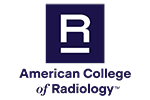Professions in Interventional Radiology
Interventional Radiologist
Interventional radiology (IR) is a medical specialty that performs minimally invasive treatments using radiologic imaging to guide procedures. Interventional radiology treatments have become the primary method of care for a variety of conditions, offering less risk, less pain and less recovery time, compared to open surgery.
Interventional radiologists are board-certified, fellowship trained physicians who specialize in minimally invasive, targeted treatments.
There are two main pathways to becoming an Interventional radiologist. Both pathways require graduating from an accredited medical school, completing a year-long internship (PGY-1), and passing a licensing examination.
- The traditional pathway consists of a diagnostic radiology residency of four years (PGY-2 through PGY 5) followed by a one-year dedicated IR fellowship (PGY-6). Most programs include several months of IR rotations during residency.
- The newer IR training paradigm is often referred to as “The Integrated Pathway.” Graduating medical students match directly into an IR residency which, in addition to the one-year internship (PGY -1), consists of five years (PGY-2 through PGY-6) of combined diagnostic radiology (DR) and interventional radiology (IR) training.
This specialized training is certified by the American Board of Medical Specialties (ABMS) and takes place in accredited training programs. Interventional radiologists have had extensive training and must show expertise in radiation safety, radiation physics, the biological effects of radiation and injury prevention. Interventional radiologists are expected to have comprehensive knowledge of the least invasive treatments available coupled with diagnostic and clinical experience.
Both during and following training interventional radiologists take several board exams administered by the American Board of Radiology (ABR). Interventional radiologists are certified by the ABR in both Diagnostic Radiology and Vascular and Interventional Radiology. Visit the American Board of Radiology (ABR) for more information on becoming an interventional radiologist.
Interventional radiologists use x-rays, ultrasound, CT, MRI, or other imaging guidance to navigate small instruments, like catheters and needles, through the body into blood vessels and/or organs to treat a variety of diseases. Examples of treatments administered by interventional radiologists include angioplasty, stenting, thrombolysis, embolization, image-guided thermal or cryoablation, and biopsies. These minimally invasive treatments can cure or alleviate symptoms of many diseases including vascular disease, stroke, uterine fibroids, or cancer. Interventional radiologists are also experts at interpreting x-rays, ultrasounds, CTs, MRIs, and other forms of medical imaging.
Further information about a career as an interventional radiologist can be found on the Society of Interventional Radiology website (www.sirweb.org) .
Vascular Interventional Radiographer
As a member of the radiology team, the vascular interventional radiographer works alongside interventional radiologists and nurses. The radiographer assists the interventional radiologist with diagnostic angiography, vascular procedures, and nonvascular procedures. These procedures can be strictly diagnostic or a combination of diagnostic and therapeutic. Vascular interventional radiographers must have a combination of technical, radiologic, and clinical skills.
Vascular interventional radiographers perform many duties during an interventional procedure. The radiographer is responsible for obtaining and setting up all instruments and equipment that may be needed for a procedure. In addition, duties such as patient positioning, imaging patients, and resolving equipment issues. Radiographers need to have and use knowledge of human anatomy, radiation safety, interventional supplies, and equipment operation.
Vascular interventional radiographers are certified by the American Registry of Radiologic Technologists (ARRT). For specific pathway requirements to certification, visit the ARRT’s Vascular Interventional Radiology page.
Additional career information about vascular interventional radiography can be found in a booklet on the American Society of Radiologic Technologists (ASRT) website.
Advanced Practice Providers
Advance practice providers (APPs) are often part of an interventional radiology (IR) team. These specialized healthcare professionals may be specially trained advanced practice nurses (APNs), nurse practitioners (NPs), clinical nurse specialists (CNSs), physician assistants (PAs) or radiologist assistants.
Advanced practice nurses (APNs) usually hold a master’s degree in nursing and have passed an exam to become credentialed by the American Nurses Credentialing Center. They are licensed in accordance with the requirements of the state in which they work.
A nurse practitioner (NP) is a registered nurse with advanced academic and clinical experience. They are credentialed by exam by either the American Academy of Nurse Practitioners or through the American Nurses Credentialing Center. They are licensed at the state level.
A clinical nurse specialist (CNS) holds a master’s or doctoral degree in a specialized area of nursing practice. Licensure depends on the state in which they are practicing.
Physician assistants (PAs) are healthcare professionals licensed to practice medicine with physician supervision. PA training programs are usually 3 years in length and most require an undergraduate college degree prior to admission. PAs are credentialed by the National Commission on Certification of Physician Assistants and licensed by their respective state.
Advanced practice providers (APPs) working as part of the interventional radiology team are often the first point of contact for a patient. APPs may perform the patient’s history and physical, develop an assessment and plan for the consultation with the interventional radiologist, place pre- and post-procedure orders, and may discuss the patient’s care with the patient, their family, and other members of the care team. In addition to performing initial consultations with patients, the APP may visit patients during their hospital stay and communicate with families and other providers. Many APPs also perform minor IR procedures and assist interventional radiologists with major procedures. APPs often make initial observations of radiologic images and may prioritize exams with critical findings. As part of the radiology team radiologists provide the official written interpretation.
Radiologist assistants are experienced, registered radiographers who have obtained additional education and certification that qualifies them to serve as radiology extenders. They work under the supervision of a radiologist to provide patient care in the diagnostic imaging environment. Specifically, an RA takes a leading role in patient management and assessment. In addition, an RA can perform selected radiology examinations and procedures under the supervision of a radiologist. An RA may be responsible for evaluating image quality and prioritizing exams with emergent findings for more rapid interpretation by a radiologist.
Radiologist assistants complete an academic program and a radiologist-supervised clinical internship. An RA must be certified by the American Registry of Radiologic Technologists (ARRT). Currently, there are nine Registered Radiologist Assistant programs in the country recognized by ARRT; seven of the programs offer master's degrees.
Further information about a career as a radiologist assistant can be found on the American Society of Radiologic Technologists (ASRT) website.
This page was reviewed on May 01, 2024



